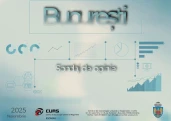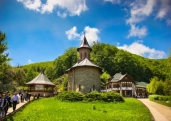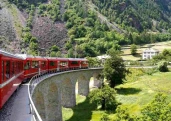Next to the church, the mill in the village was always the place where news flew like thought, there was talk of drought and harvests, of children, of sorrows and cures. Once they got off the carts, the bags of wheat and corn waited their turn to enter the grip of the rollers, obtaining, at the end, the white flour for bread or the golden one, for the polenta daily meal.
The lands of southwestern Banat were always fertile, and the well-being of the people of the old villages could be measured by the number of sacks of flour removed from the threshing floor.
The chairman of the Acasa în Banat Association, Radu Trifan, began a laborious job of searching and identifying the most famous grain mills that have found their place in the history of western Timis County, thus outlining a molinological heritage that can be capitalized as part of the local industrial heritage, told Agerpres.
In the project initiated by Radu Trifan, entitled Morile Banatului / Water Mills of Banat, all grain mills were located by GPS, photographed and included in a public database. At the same time, the team also carried out an investigation in documents and monographs related to the history of these buildings, but also on the spot, where it was possible to collect testimonies through live speech.
"As part of the project, we identified 85 mills in Timis County, to which we could also add the animal-powered mill from Sanpetru Mare, located since 1977 at the Astra National Museum Complex in Sibiu, the only one of its kind preserved and preserved here in country. At the end of last year, there were 14 functioning grain mills and 71 non-functioning grain mills in Timis County," Radu Trifan explained for AGERPRES.
About the mill with animal traction from Sanpetru, the vice-chairman of the Acasa in Banat Association, Nicoleta Trifan, pointed out that it represents a monument of folk architecture and was an invention of the Swabians.
The commune of Lovrin is famous for having, according to the documents mentioned by Radu Trifan, in 1778, mills with animal traction located in every corner of the town, for which the owners paid an operating fee. The mill in Lovrin, built by the entrepreneur Adalbert Zappe, in 1937, had modern equipment for those times, and in just two years it was redone, a new building body and a system for pressing sunflower seeds were added. In 1955, the mill became the property of the state, but today it is private property and is no longer functional.
The only water-powered mill in the county that is still functional, the Balint Mill, called the Lucky Mill because it survived a devastating fire, was built during the Austro-Hungarian administration, at the beginning of the last century.
Another old mill in the county, which is still functional, is the Terezia mill, built in 1894 in Becicherecu Mic, which still retains the original rollers, made by a company from Frankfurt, at the end of the 19th century.
From Pia Cretu, the granddaughter of former merchants from Caras who kneaded bread from the ground flour at the mill in the village, we find that sometimes you could wait a whole day at the gate of the mills, and during this time, people told stories to pass the time.
The association Acasa in Banat wants to introduce the molinological heritage of Timis county into the tourist circuit, after having achieved the same thing with the water mills of Caras-Severin county. A century ago, the landscape of Banat was very different. There were windmills, water mills, floating water mills, horse mills, industrial or steam mills. Technological evolution has made most of these disappear and, with them, an entire world of the village, with the stories and legends of the past, has descended into oblivion.
































Comentează